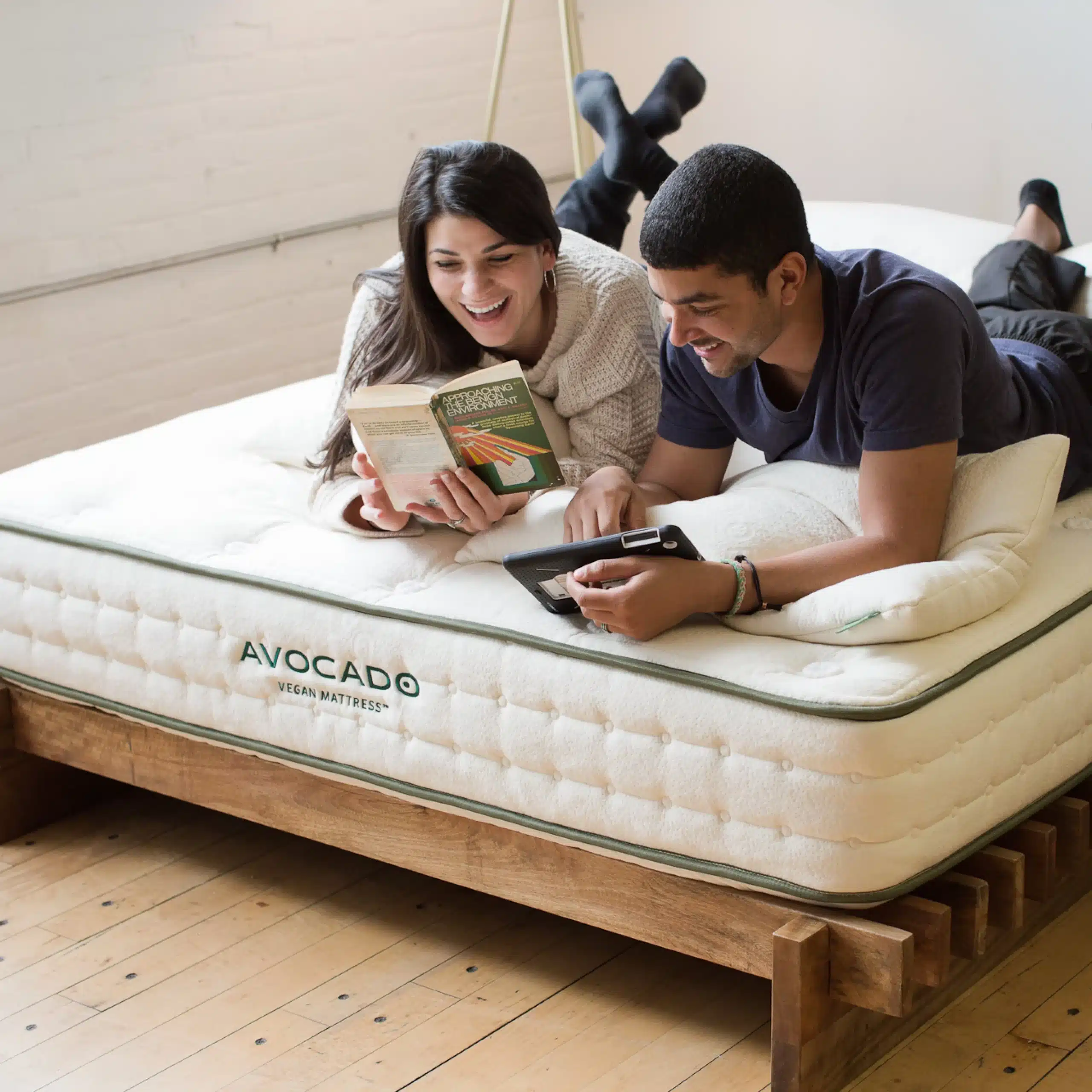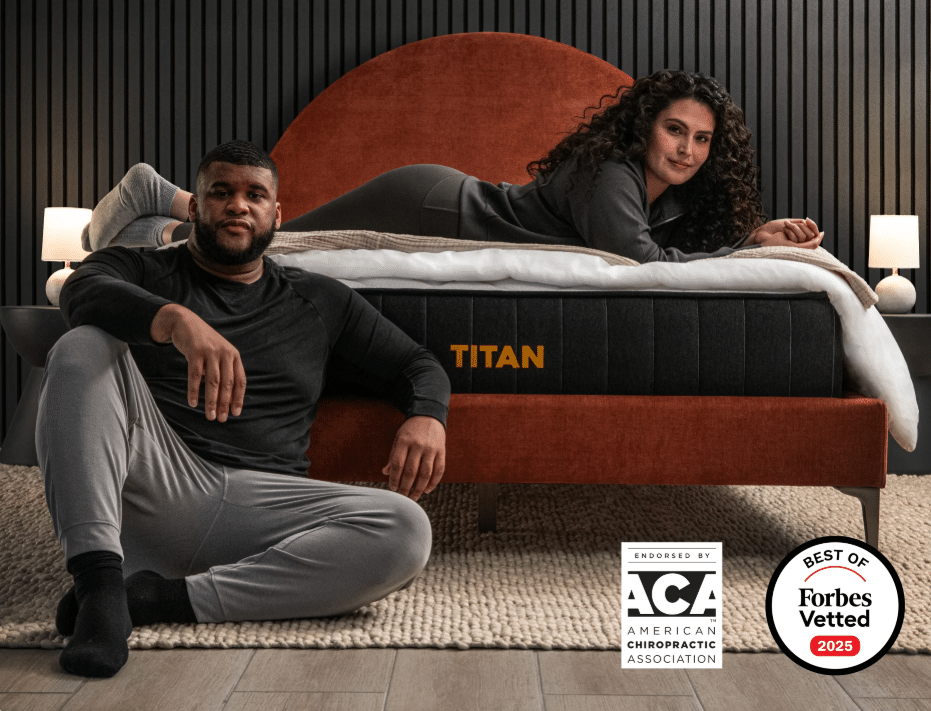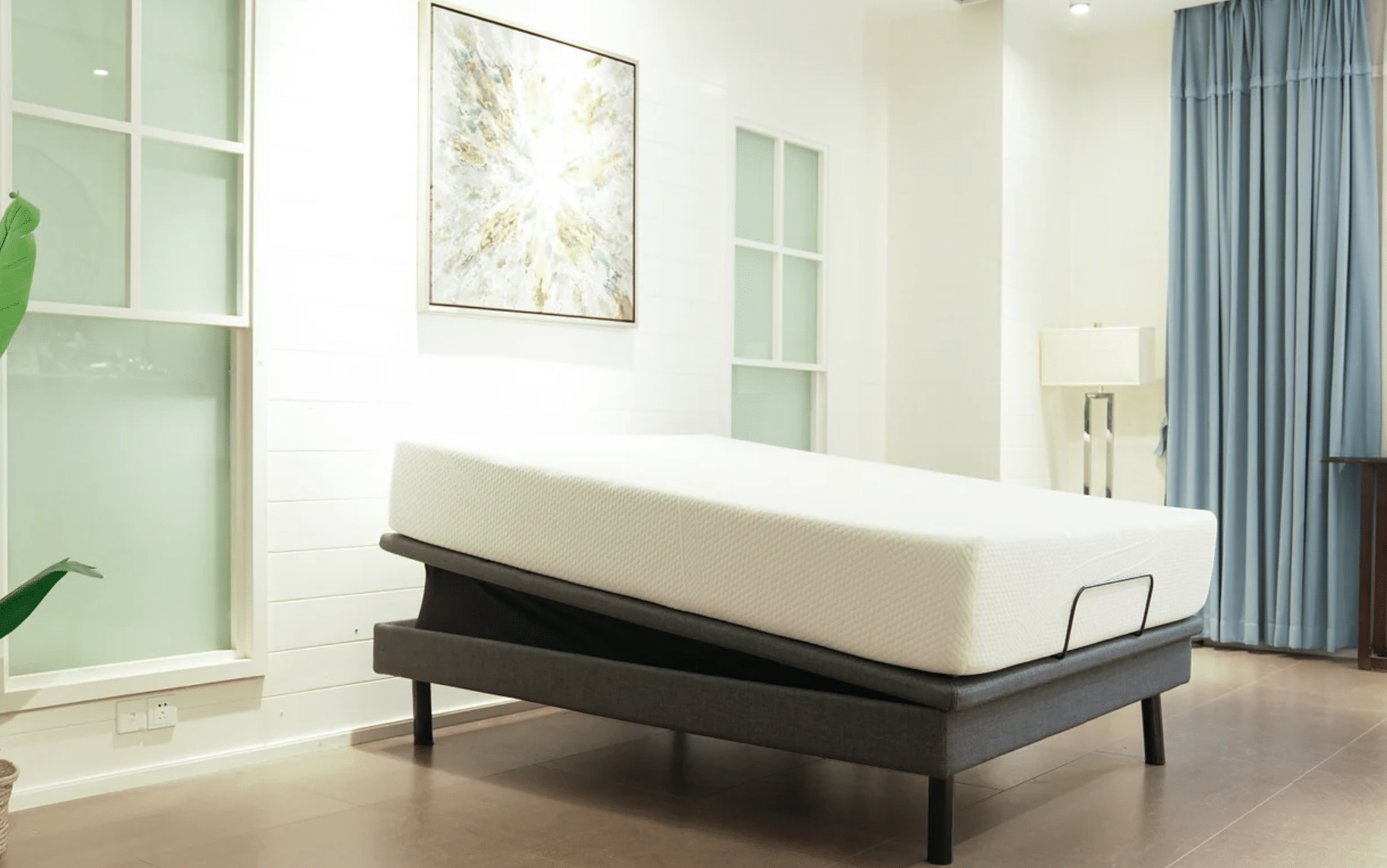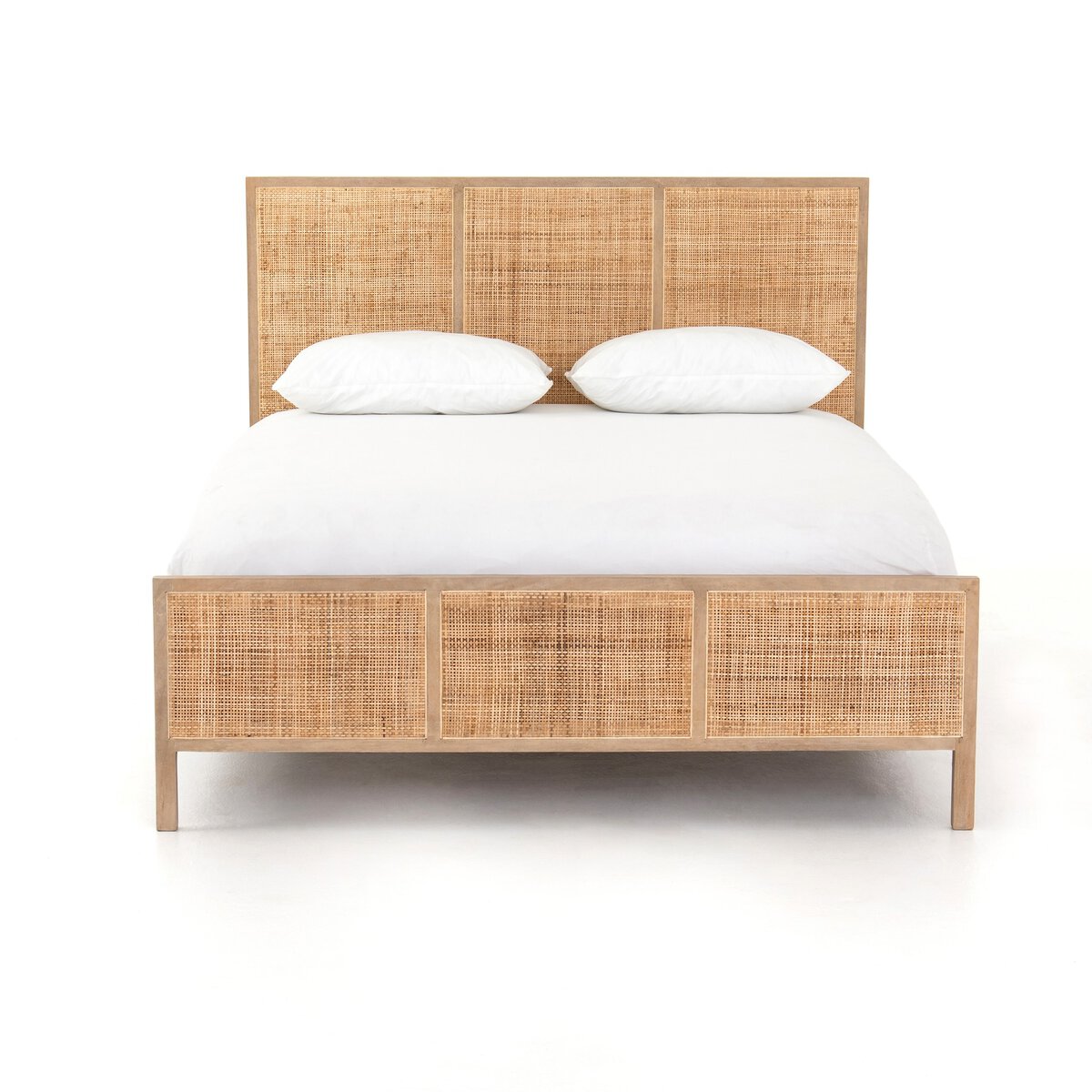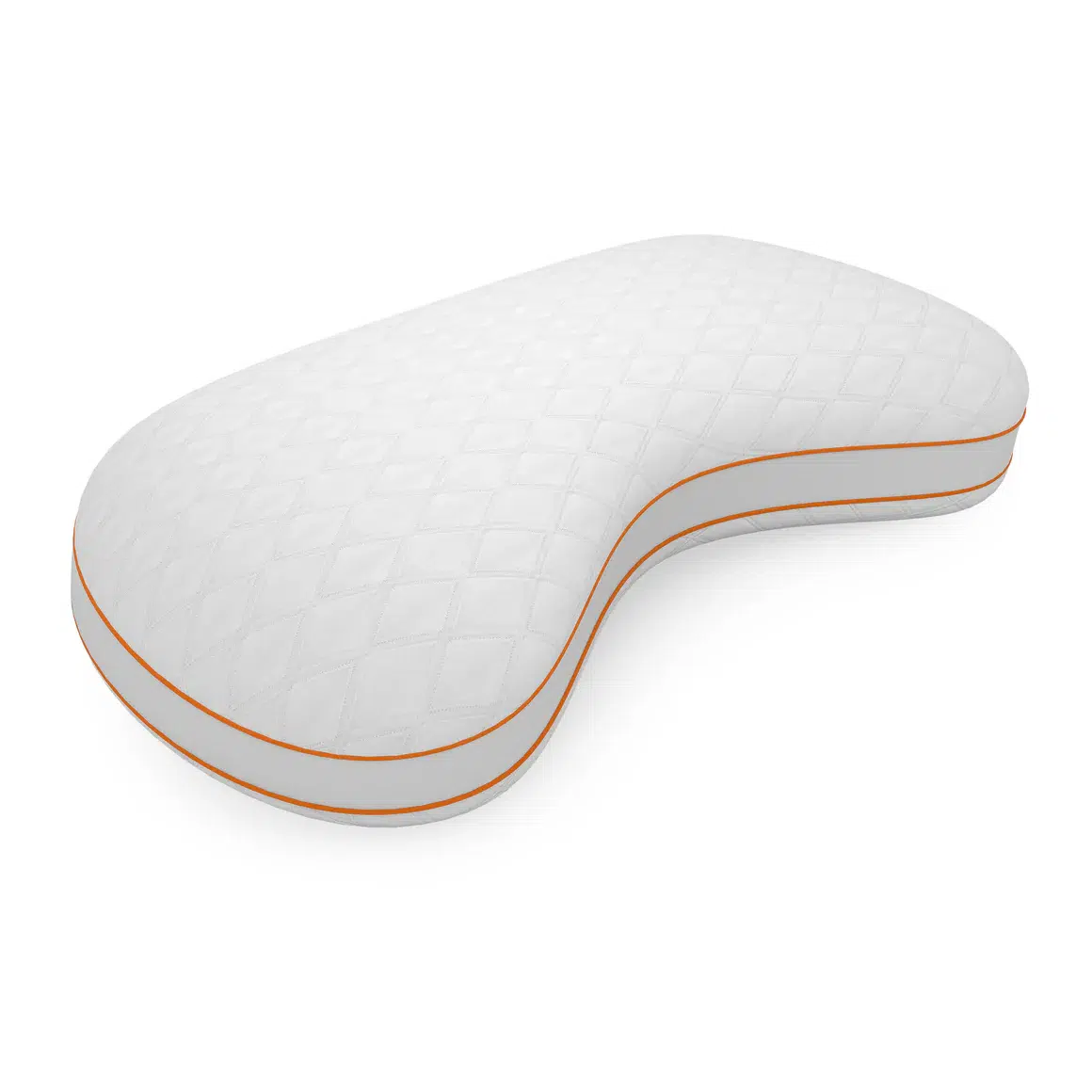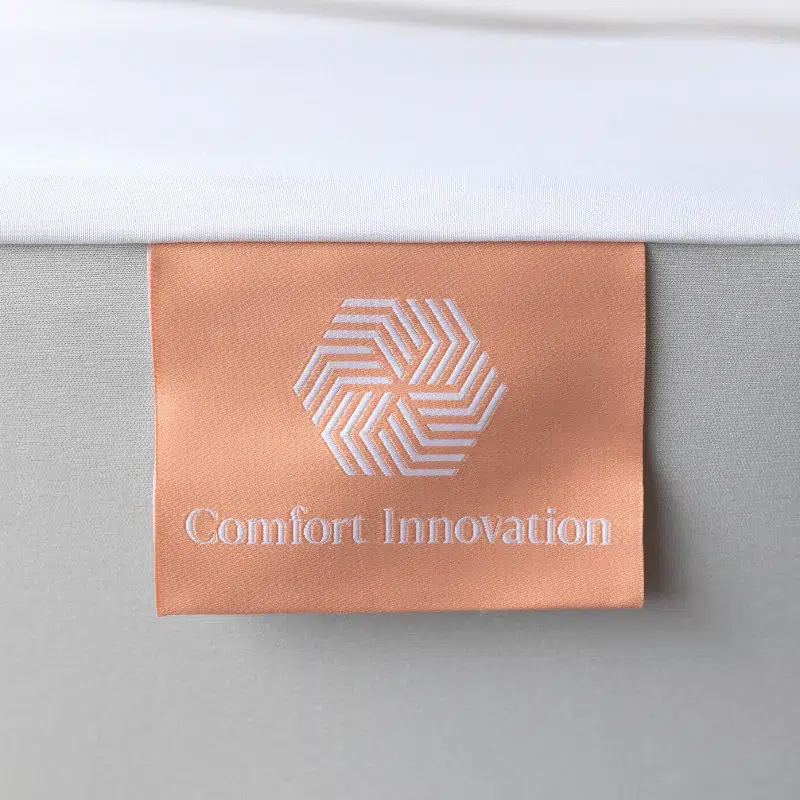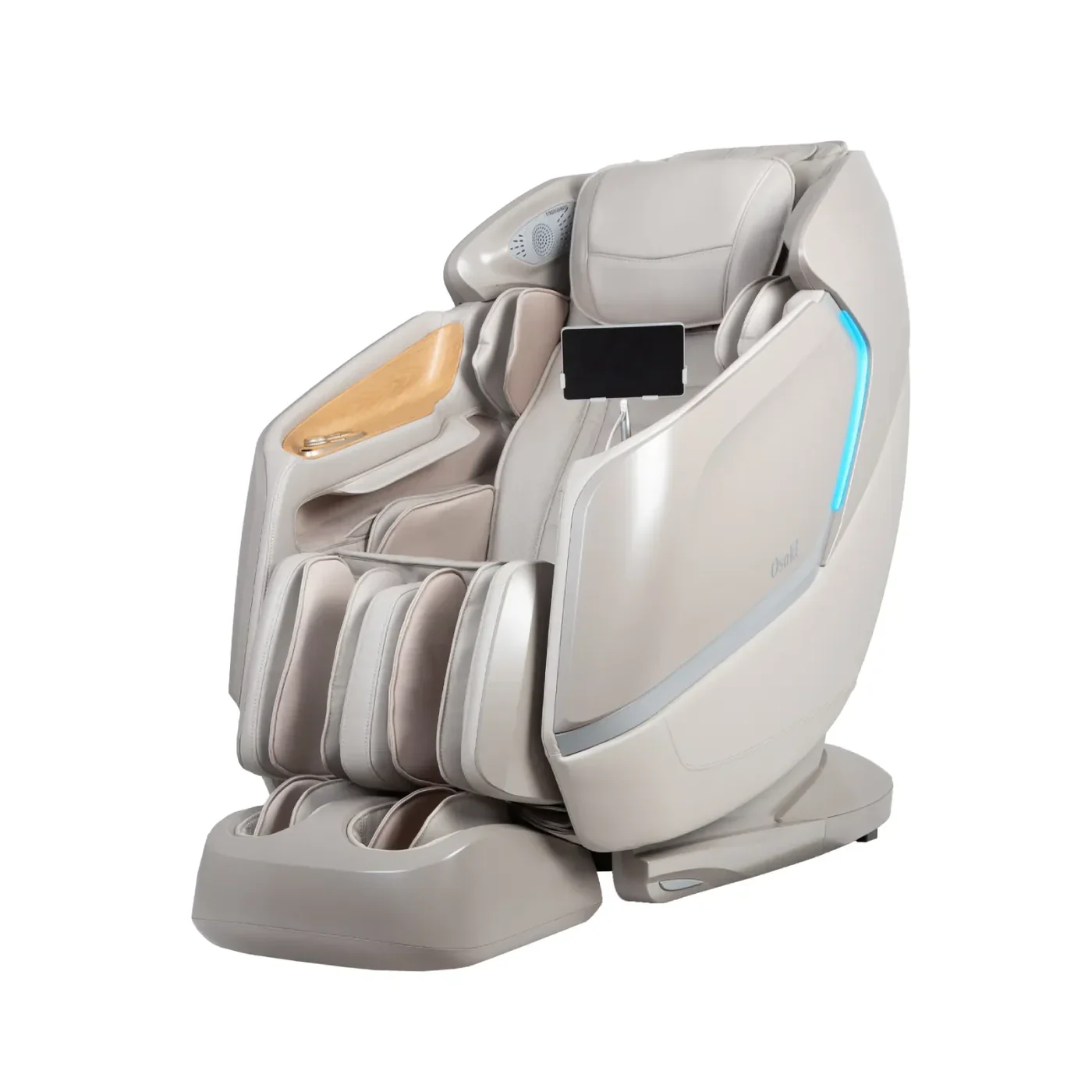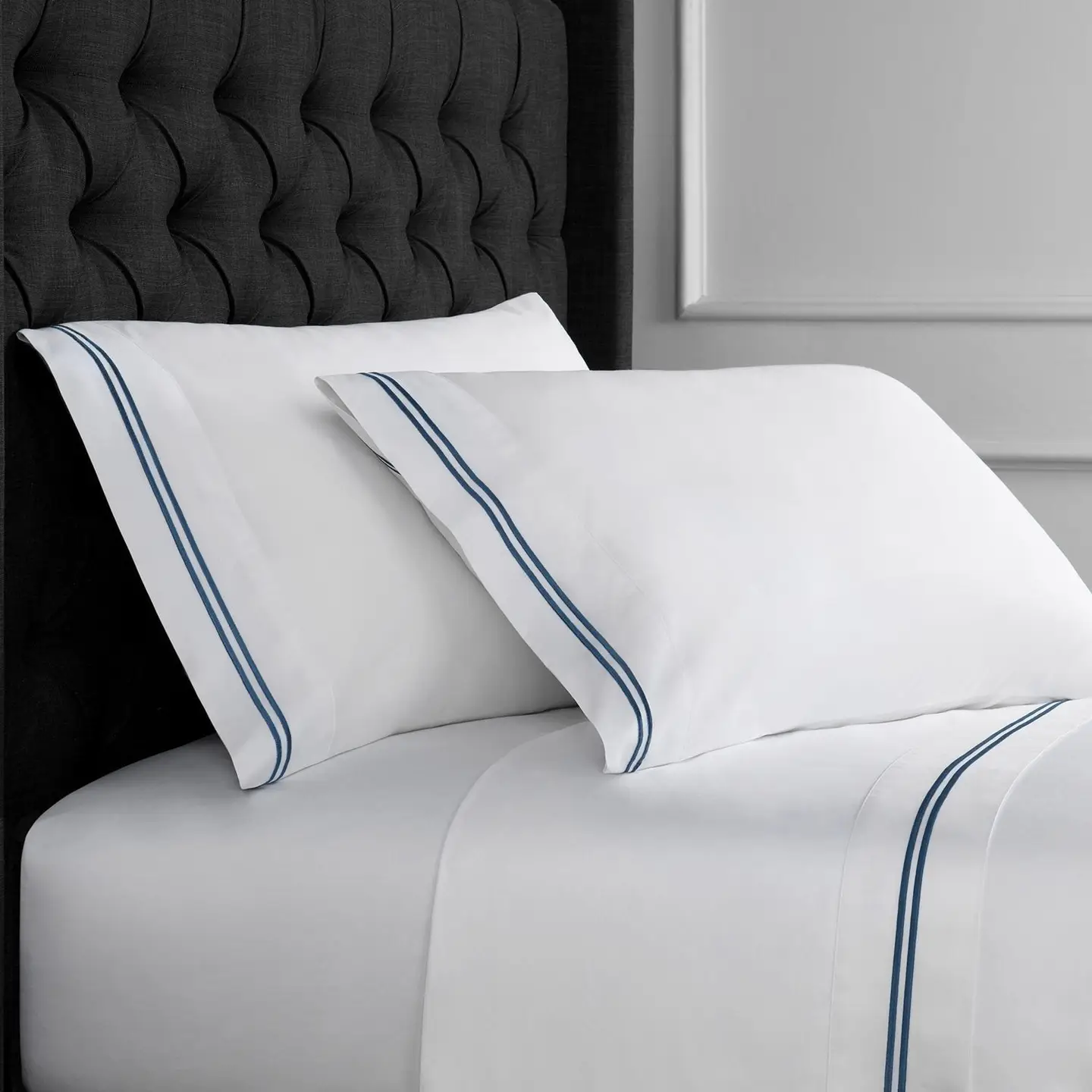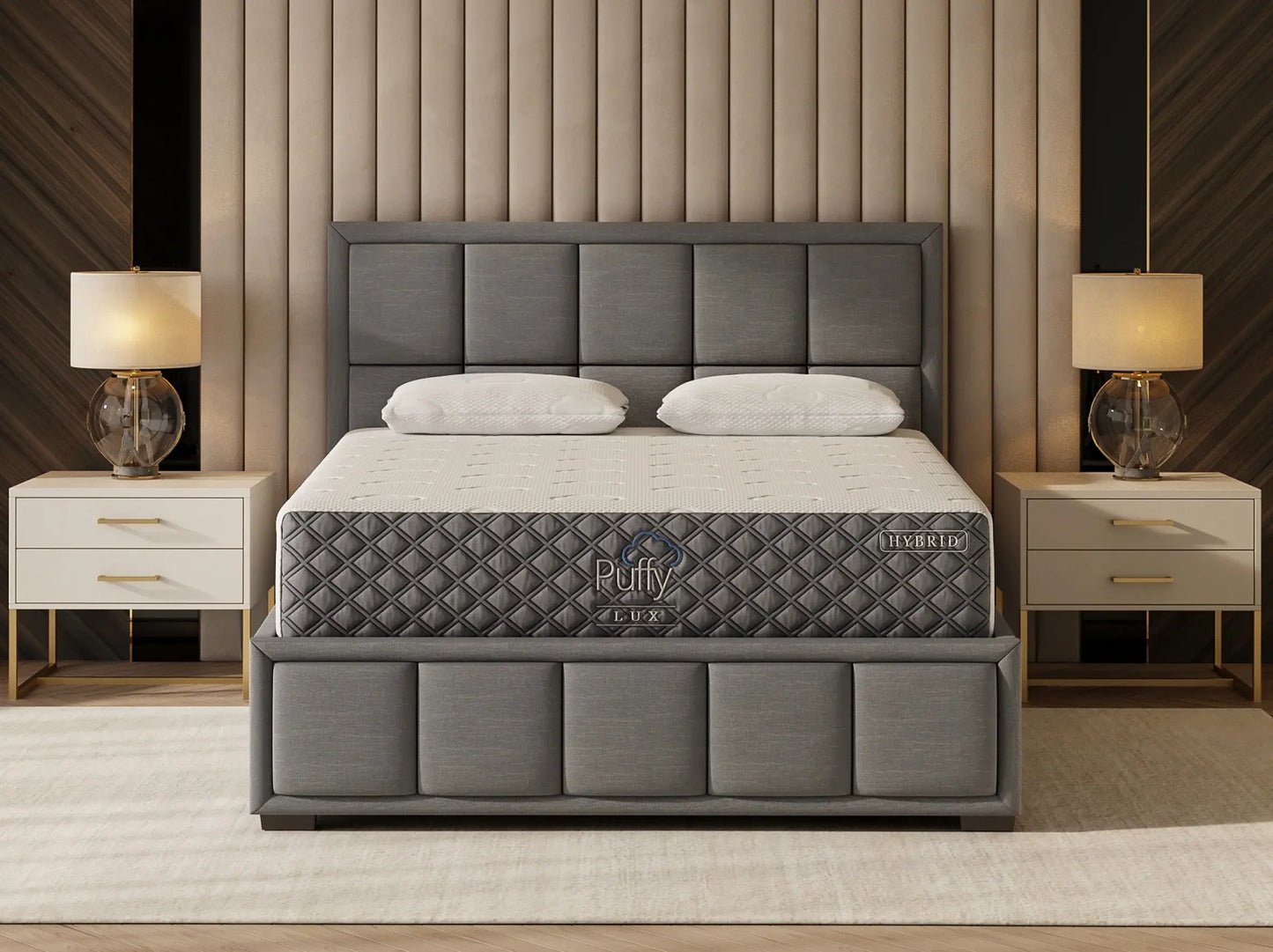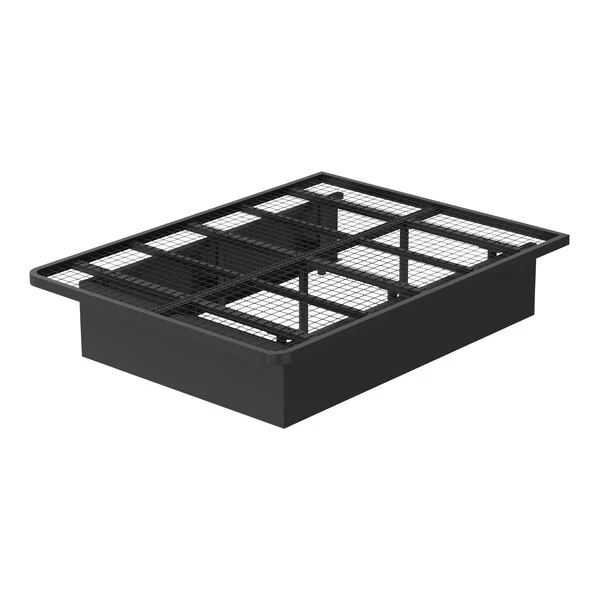In an era where business transparency has never been more vital, the mattress industry often seems shrouded in mystery, fueled by dubious sales techniques, indecipherable jargon, and prices that fluctuate as much as your sleep patterns. It’s a world dominated by a few heavyweights, leaving consumers tangled in a web of strategic markups, deceptive discount practices, and pseudo-scientific claims that promise the elusive “perfect sleep.”
Here’s the kicker: The vast majority of mattresses are fundamentally similar. That’s right. Whether it’s brand A or brand Z, many mattresses come from the same manufacturers, with only minor variations. Yet, with the aid of effective marketing, prices can skyrocket, leaving you to fork out thousands for a mattress that might be virtually identical to a far cheaper model.
Discounts? Those enticing sales that always seem to be on? Many are no more than strategic illusions. Stores frequently inflate original prices only to offer ‘huge discounts’ and ‘limited time deals,’ creating an urgency that pushes you to purchase faster, and often, more expensively.
But fear not, dear consumers. A good night’s sleep shouldn’t be a gamble. There are ways to cut through the murkiness.
First, educate yourself about the basic types of mattresses – innerspring, memory foam, latex, hybrids, and adjustable air beds. Know what suits you before succumbing to sales patter. Second, utilize the power of the internet. Online mattress companies, with their typically transparent pricing models and extended trial periods, are shaking up the industry, giving consumers a much-needed breath of fresh air.
Most importantly, don’t rush. Take your time to test the mattresses, read reviews, compare prices, and evaluate the claims made by brands. A good mattress is a long-term investment in your health and well-being, so it’s worth putting in the research.
By empowering ourselves with knowledge and a critical eye, we can turn the tide on the shady tactics of the mattress industry. After all, the secret to a good night’s sleep should never be locked away in a deceptive sales pitch.
yawnder.com has partnered with the engineering talent at DepthSight Innovations to develop state-of-the-art proprietary mattress testing tools that help consumers better understand how their mattresses will perform. We are proud to be the first independent and free service that provides these kinds of objective metrics. These tools go beyond the industry standard assessment of “soft” and “firm”. Read on to discover just what new testing Sleepsherpa is providing.
The Tests
The first test we perform is the free weight drop. We drop a whopping 220 pounds on the mattress to see how it responds. We are not aware of anyone else who does a test like this, and it can teach us a lot.

The second test we perform is the firmness test. We slowly add more force the mattress and record force as well as travel as the circular plate sinks further into the mattress. While this test is not as exciting as dropping all 220 pounds at once, it too can teach us a lot about the characteristics of the mattress. Read on to learn more details about the six metrics we pull from these two tests.
The Metrics
The first three metrics come from the firmness test, where we slowing increase the force on the mattress. Let’s see what we can learn from this test.
Firmness
Perhaps the number one question a mattress buyer will have on their mind is how firm the mattress is. We calculate the firmness using a method straight from ASTM 1566. It’s pretty simple, the less a mattress deflects with 175 lbs on it, the higher the firmness rating will be.
Surface Firmness
The firmness metric tells you a lot about how a mattress will feel for you, but it is a major over-simplification. Many memory foam mattresses feel more firm with light loads than with higher forces, while many spring mattresses get stiffer with more force applied. Most people also won’t exert 175 pounds on such a small surface while they are sleeping. That’s why at Yawnder we also report the “surface firmness.” Rather than calculate the firmness with 175 lbs, surface firmness is the value with just 40 pounds on the mattress.

Memory
You may notice in the graph above that each curve actually consists of two lines that meet at the top and the bottom. Each curve looks sort of like a crescent moon. The first of these lines is the loading path, where the plate is moving into the mattress. The second line is the unloading path, where the plate is being lifted from the mattress. The difference in these two curves is called “hysteresis.” Hysteresis is just a technical way of saying “memory.” A mattress with a lot of memory will look like a fuller moon, while a mattress with very little memory will look like a very thin sliver. We have a proprietary way of measuring this memory and reporting it as the memory index.
Firmness, surface firmness, and memory are the three metrics we pull from the firmness test. Let’s take a look at what can be read from a drop test.
Impact Force
When you plop down on a mattress at night you might expect to bounce a little bit. That’s just what happens with most spring mattresses. Some cheap spring mattresses will even cause you to feel a large force, almost three times your own weight, when the mattress “bottoms out”. The impact force is simply the force you will feel on your bottom when you sit on the mattress.
Bounciness
In addition to the peak force, we can also measure how many times you might bounce and for how long you might bounce before the mattress absorbs your energy. We use a proprietary method to derive an unbiased bounciness index value.
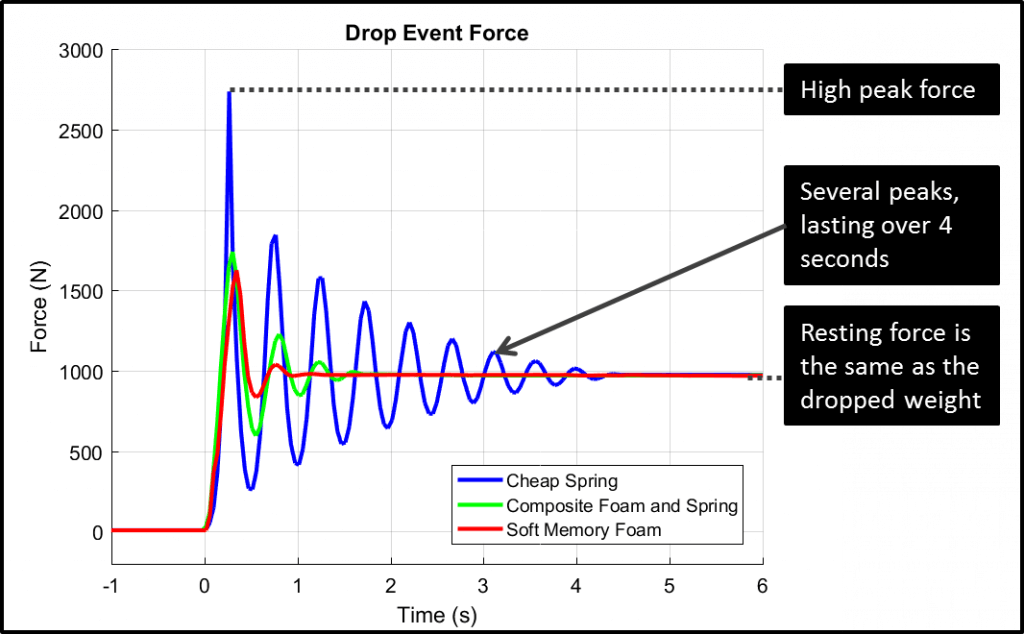
Partner Shake
Maybe you don’t worry too much about how you bounce in the bed, but your sleeping partner certainly will not want to feel the bed move when you are rolling around at night. That’s why we came up with the partner shake metric. We measure the movement of a controlled weight at a controlled distance from the drop location. From that movement information, we can tell how long and how much your partner will shake when you come to bed late after a marathon binge viewing of your favorite TV show.

More Tests are Coming
The team at Yawnder and DepthSight are not planning to stop with force-based testing. A new tool on the horizon is one that will measure how well a mattress breathes. Traditional breathability metrics rely on measuring forced air flow rates, but who tries to breathe through their mattress? What matters is moisture transfer, and that’s what Sleepsherpa is going to measure. We are also developing a heat transfer test. Stand by for updates. Click here for more information on Yawnder and the technical staff at DepthSight.
Not all of the mattresses reviewed have gone through these tests but we are constantly updating our findings as new tests are done. Click Here for listing of mattress reviews.
Put Your Faith in Our Expertise – Here’s Why
Our squad is an ensemble of distinguished sleep connoisseurs, each boasting a rich pedigree of years spent in meticulous research, rigorous testing, and thoughtful evaluation of sleep products. We are staunch believers in the fundamental role of expertise and experience in delivering precise product rankings. We also hold diversity as a cornerstone – our analysts have been handpicked to reflect a comprehensive array of body types, sleep habits, and personal inclinations, underscoring our commitment to cater to the unique needs of every individual.
Practical Investigations: Our Approach Our team undertakes a wealth of individual experiments, gaining a comprehensive understanding of each product we scrutinise. We personally engage with mattresses, lying down on them, rising from them, and perching along their sides. High-tech tools complement these hands-on tests, addressing specific performance aspects – such as pressure distribution gauged via body-mapping tools, temperature measurements, and off-gassing levels monitored through VOC detectors.
These meticulous examinations enable us to craft reliable ratings that surpass mere manufacturer data, steering you toward the ideal sleep products for your needs. Rest assured, each item we endorse has survived a full battery of tests.
Introducing Our Product Testers Body weight and sleeping position, we’ve discovered, substantially affect mattress comfort levels. For example, a side sleeper weighing under 130 pounds will likely favour a pliant, adaptive mattress that cushions the body and alleviates spinal pressure. Conversely, a back or stomach sleeper exceeding 230 pounds will probably require a robust, supportive mattress that doesn’t excessively compress around the middle.
Accordingly, our assembled testers span various body types and represent side, back, stomach, and combination sleepers. This diversity commitment guarantees inclusive ratings and recommendations, catering to sleepers of all weights and styles.
Unveiling Our Mattress Ratings Our mattress evaluations take numerous variables into consideration. Every performance category encompasses multiple tests. Depending on these results, we award ratings on a five-point scale:
1 – Unsatisfactory 2 – Mediocre 3 – Decent 4 – Excellent 5 – Outstanding Recognising the possibility of subjective findings, our entire team participates in testing to maintain unbiased, objective results. Here, we present our critical testing criteria for mattresses and how these factors can enhance your quest for the perfect mattress.
Firmness Explained We employ ‘firmness’ to articulate a mattress’s soft or hard feel. Measured on a 10-point scale, with 1 being the softest and 10 the firmest, most contemporary mattresses range between a 3 (soft) and 8 (firm).
Firmness corresponds directly to contouring or how intimately a mattress ’embraces’ your body. Softer mattresses offer deep contouring, while firmer models contour minimally. To establish a mattress’s firmness, our testers rotate on its surface, assessing the extent of contouring. Weights assist in measuring compression.
Our 10-point firmness scale is as follows:
1-2: Ultra-Soft 3: Soft 4: Medium Soft 5: Average 6: Medium Firm 7-8: Firm 9-10: Ultra Firm While we base many of our recommendations on firmness, remember that firmness preferences are highly personal. Our findings suggest most side sleepers prefer softer mattresses than back or stomach sleepers. However, this should be understood as a broad observation rather than a universal prescription.
Understanding Sleeping Positions The three standard sleeping positions are side, back, and stomach. The term ‘combination sleeping’ applies to those who alternate between two or all three positions during a single night. Side sleepers generally need extra cushioning to accommodate their shoulders and hips, these being the areas prone to pressure buildup. For side and back sleepers, additional reinforcement around the midsection can help maintain an even surface and prevent uncomfortable sinking.
When scrutinising each mattress, we call upon team members representing side, back, stomach, and combination categories. Along with lying on the mattress to gauge its comfort, they’ll execute various tests using their preferred position. We then consolidate feedback from different performance categories to generate an overall position-specific score.
However, your sleeping position isn’t the sole determinant. Your body weight plays an equally critical role in how comfortable a mattress feels.
In our quest to understand the performance of various sleep products, we engage in an array of practical investigations. These range from physically interacting with mattresses to using state-of-the-art technology for advanced performance assessments. Our hands-on approach includes spending time lying, sitting, and moving around on each mattress under scrutiny. We also deploy specialized tools like body-mapping equipment to measure pressure buildup, thermometers, and volatile organic compound (VOC) detectors to assess off-gassing levels.
Our elaborate testing procedures enable us to produce comprehensive ratings that extend beyond manufacturers’ specifications, serving as a reliable guide for consumers. Each product we endorse has been subjected to a rigorous set of tests.



